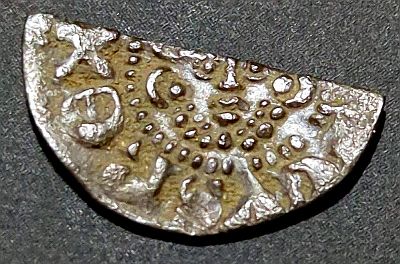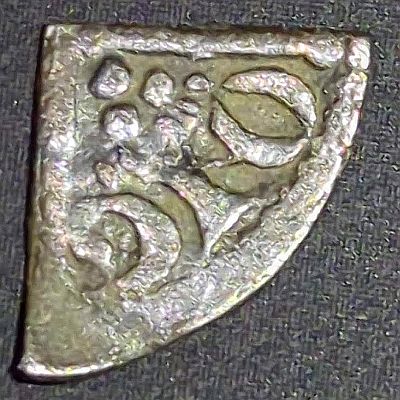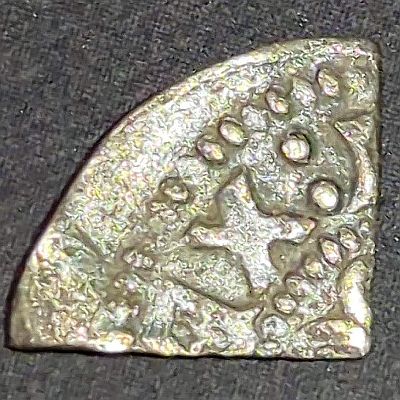In recent times, the UK has minted pennies, half pennies and farthings (1/4 penny), each as their own denomination coin. That wasn’t always the case.

This is a penny issued under Henry III between 1247 – 1279. It shows the King’s portrait, facing front, with text around the edge. The coin has been cut in half, so on this piece we can’t see the top of the King’s head. In fact, cut coins have been found from most Roman Emperors, including my cut Antoninianus from Gallienus.

The reverse shows a “long cross” design, that is, the coin has a pair of parallel lines vertically dividing the whole coin, and two horizontally. This cross basically gives a guide as to where to cut the coin in half or quarters. Cutting the coin in half literally make two “half pennies”. Cutting a half penny gives two farthings. The coin features three pellets in each quarter surrounded by a dotted line, with text around the edge.
This coin is a “Long cross” design, because the cross extends right to the edge of the coin. There was also a “Short cross” design, issued earlier in the King’s reign (1216 – 1247) where the cross only extends to the inner dotted circle.
In this period, coins were “hammered”, that is, the mint worker would hold the top die in place over the flan and bottom die, and physically hit it with a hammer. This was dangerous, and also inexact. While the cross appears neatly cut between the lines, the cut on the side of the King’s portrait appears at an angle – the die was rotated slightly when this coin was hammered.
Here is a long cross farthing:


In this case, the design appears to be off-center, leaving an empty piece of flan at the edge of the coin. On this piece we can’t see much of the King’s portrait at all (I believe that is part of the curls of his hair. Here is a full penny of the time from Numista, showing the entire portrait:

One of the best sites I have found to research these is the UK Detector Finds Database.
So who was King Henry III? He took the throne at just 9 years old when his father King John passed away. He inherited not only England, but also the “Angevin Empire“, which included half of France, Ireland and Wales as well as England. As he was not yet of age, John had arranged for a council made up of thirteen executors who would assist Henry. He was placed in the care of one of the most well-known knights in England, William Marshal. Henry came of age in 1227, and continued to rely on the advisors who had guided him in his youth.
Henry III was heavily involved with the Magna Carta, a document which heavily influenced the British system of government to this day. Henry’s reign was beset by conflict, however he also rebuilt Westminster Abbey, where he is buried. He died in 1272, with his 56 year reign being the longest in medieval English history, until George III.


Leave a Reply